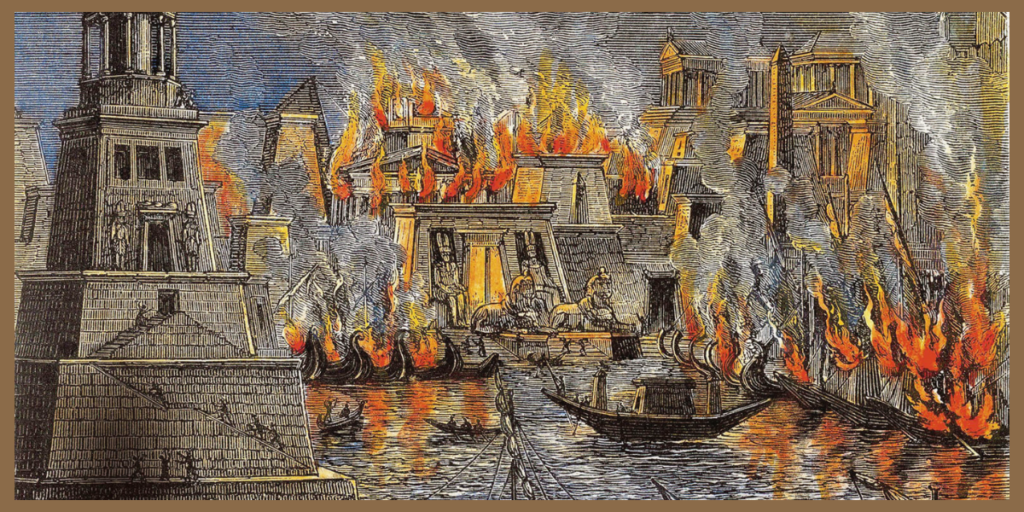Throughout history, countless books have been written, read, and revered, only to disappear without a trace. Whether lost due to war, censorship, or the ravages of time, these vanished works often leave behind tantalizing clues that spark our imaginations and stir our longing for their recovery. Here, we explore the top 10 disappeared books that have left an indelible mark on literary history despite their absence.
The Books of Aristotle’s Comedy
Aristotle, the renowned Greek philosopher, wrote extensively on various subjects. While his works on tragedy, “Poetics,” have survived, his treatise on comedy is lost. The absence of Aristotle’s analysis of comedy leaves a significant gap in understanding ancient Greek theatre and the evolution of comedic forms.
The Library of Alexandria
Not a single book but a vast collection, the Library of Alexandria was one of the most significant repositories of knowledge in the ancient world. Established in the 3rd century BCE, it housed works by numerous scholars, philosophers, and poets. The library’s destruction, likely caused by a series of fires and conflicts. Resulted in the loss of countless invaluable texts, forever altering the course of intellectual history.
Homer’s Margites
Homer, the legendary author of “The Iliad” and “The Odyssey,” is also credited with writing “Margites,” a comic epic that is now lost. Ancient sources praised the work for its wit and humor. Its disappearance deprives us of a complete picture of Homer’s literary range and the comedic aspects of ancient Greek literature.
Shakespeare’s Cardenio
“Cardenio” is a lost play attributed to William Shakespeare and his contemporary John Fletcher. Based on a character from Miguel de Cervantes’ “Don Quixote,” the play was performed in 1613 but never published. Its disappearance has spurred much speculation and numerous attempts to reconstruct it from references and secondary sources. Yet the original text remains elusive.
Jane Austen’s Sanditon
Jane Austen’s final novel, “Sanditon,” was left unfinished at the time of her death in 1817. The incomplete manuscript, consisting of only 11 chapters. Introduces us to a vibrant new cast of characters and a seaside town undergoing rapid change. Austen’s early death meant she could not complete the story, and her notes provide only a glimpse of what might have been a significant addition to her oeuvre.
The Sibylline Books
The Sibylline Books were a collection of prophetic writings used by Roman officials in times of crisis. Stored in the Temple of Jupiter, these texts were believed to contain the destiny of Rome. They were destroyed in a fire in 83 BCE, and although attempts were made to reconstruct them, the original texts were lost, leaving a gap in our understanding of Roman religion and prophecy.
Thomas Hardy’s First Novel
Before Thomas Hardy became famous for works like “Tess of the d’Urbervilles” and “Far from the Madding Crowd,” he wrote his first novel, “The Poor Man and the Lady.” This early work was rejected by publishers, and Hardy destroyed the manuscript. The themes and style of this lost novel remain subjects of speculation among Hardy scholars and enthusiasts.
Sylvia Plath’s Second Novel
Sylvia Plath, the author of “The Bell Jar,” was working on a second novel at the time of her death in 1963. Known only by the working title “Double Exposure” or “Double Take,” the manuscript was lost and has never been found. Given Plath’s immense impact on modern literature. The loss of this novel represents a significant gap in the understanding of her literary legacy.
Ernest Hemingway’s Lost Suitcase
In 1922, Ernest Hemingway’s wife, Hadley, misplaced a suitcase containing almost all of his unpublished manuscripts during a train trip in Paris. The loss included the drafts of his early works and potential masterpieces. This incident is a poignant reminder of how fragile the creative process can be and how easily potential literary treasures can vanish.
Bruno Schulz’s The Messiah
Bruno Schulz, a Polish writer and artist, is best known for his collections. The Street of Crocodiles” and “Sanatorium Under the Sign of the Hourglass.” Before his death in 1942, Schulz was working on a novel titled “The Messiah.” The manuscript was lost during the chaos of World War II, and its disappearance has left a void in 20th-century literature, as Schulz’s unique style and vision remain incompletely represented.





